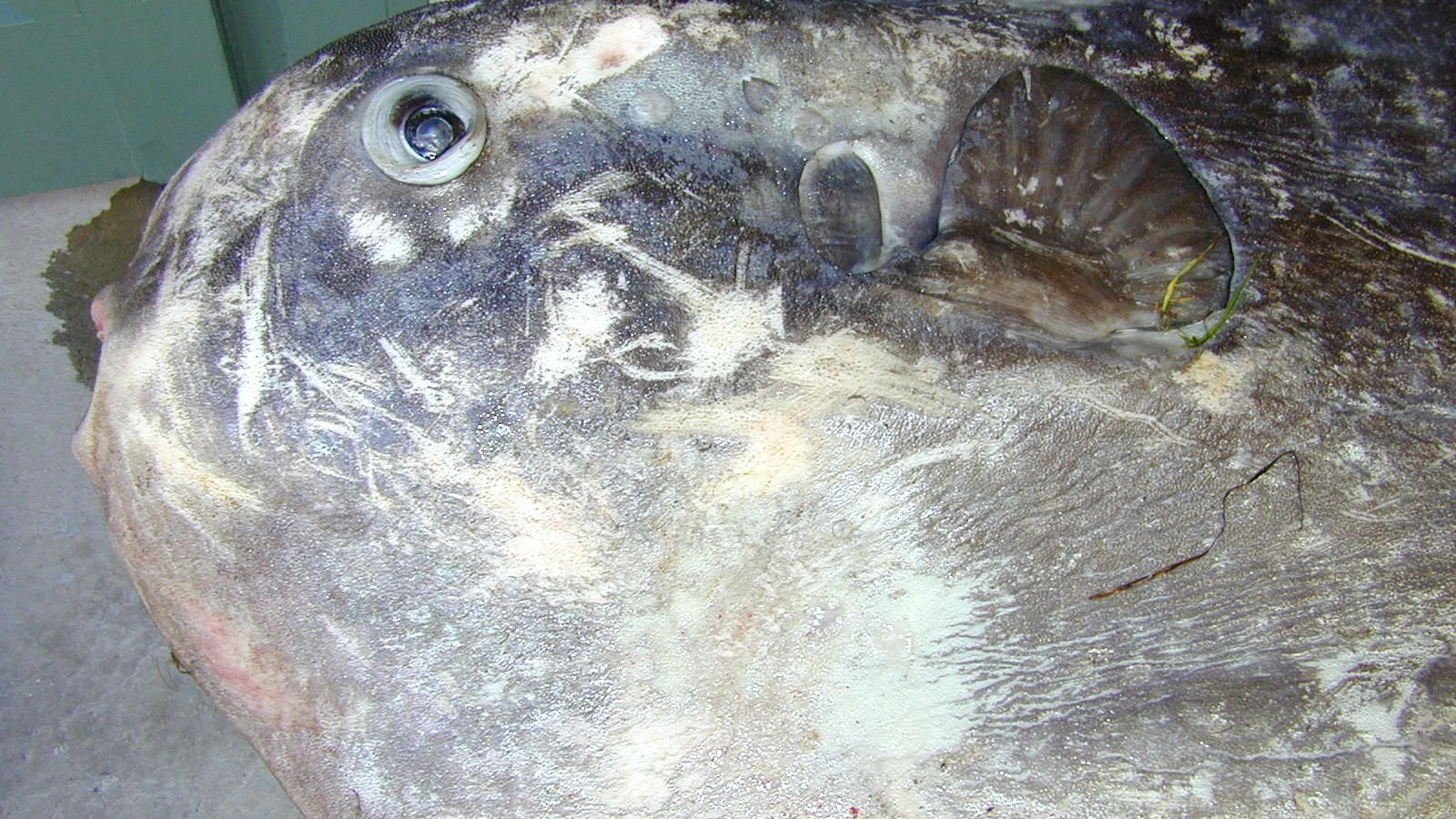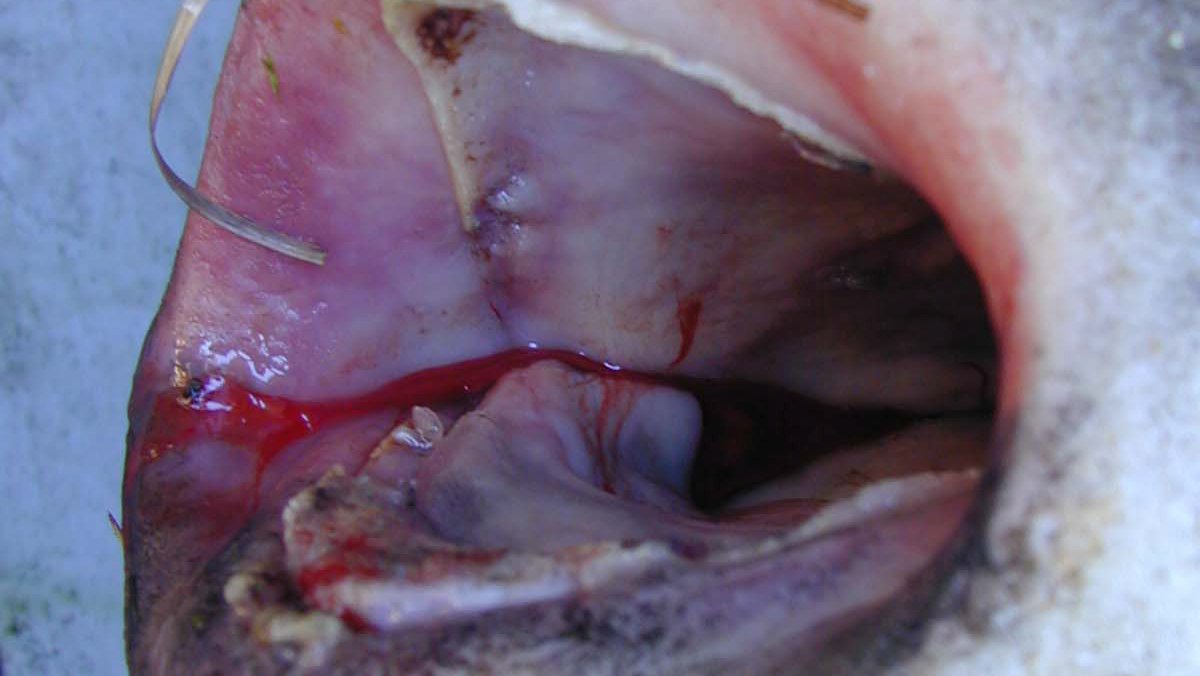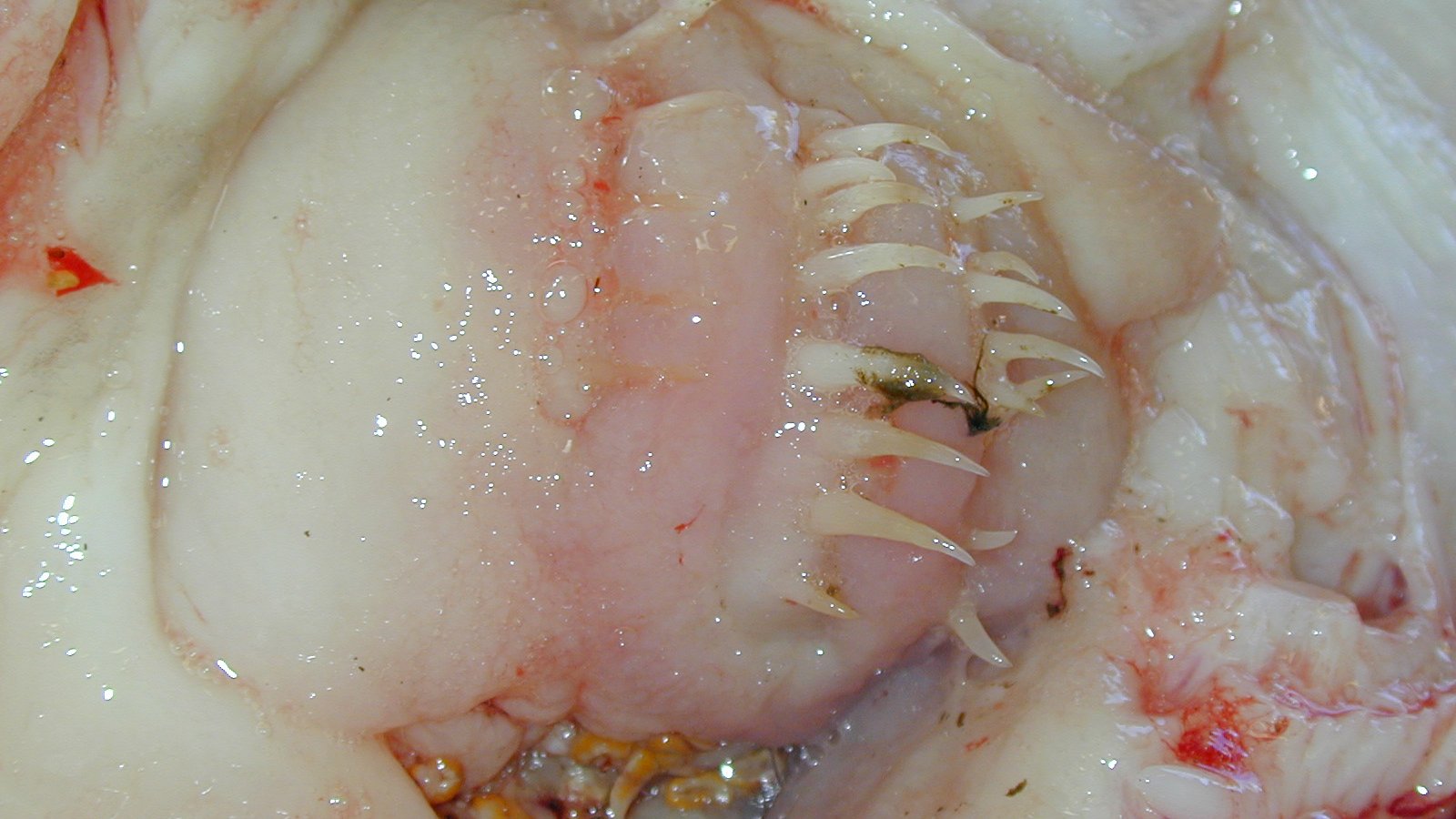Hoodwinker Sunfish, Mola tecta Nyegaard et al 2017
Bump-head sunfish Mola alexandrini, Ocean Sunfish Mola mola
Introduction
The Hoodwinker Sunfish, Mola tecta, is a new species of sunfish, recently discovered ‘hiding in plain sight’ in museum collections. For over 125 years specimens of this species were mistakenly identified, until a recent study by Nyegaard et al (2017) identified them as a new species, patiently waiting to be discovered. In fact, the specific name of this species, ‘tecta’, is latin for hidden or disguised.

Hoodwinker Sunfish, Mola tecta
Image: Morton JonuschatCC BY-NC
Identification
Sunfish are from the family Molidae and are the largest bony fish in the world. They have attracted interest for centuries because of their unique shape and large size. These beautiful giants can grow to more than 3m and over 2000kg. Sunfishes are found worldwide in the open ocean of tropical and temperate seas.
These interesting fish are completely without a caudal fin, instead replaced by a ‘clavus’, which in latin means ‘rudder’. A number of different characteristics are used to separate the Mola species and one of them is the clavus. Mola tecta can be identified from its rounded clavus edge with indent, 15-17 clavus fin rays and its body scales are raised conical midpoints (the clavus is wavy or lobed in Mola mola and rounded in Mola alexandrini).
Five species of sunfish are found in Australian waters, the Hoodwinker Sunfish - Mola tecta, the Bump-head Sunfish - Mola alexandrini, the Ocean Sunfish - Mola mola, Slender Sunfish - Ranzania laevis, and the Point-tailed Sunfish, Masturus lanceolatus. Mola tecta is found in temperate southern hemisphere waters around Australia, New Zealand, South Africa and Southern Chile feeding on salps and siphonophores.
It is surprising that such a large fish could be ‘undiscovered’ in museum collections, but due to their rare occurrence to scientists combined with the difficulties in preserving large specimens, this beautiful fish had to bide its time to be revealed to the world.
Specimens in the collection:
On September 11, 2002, a 1.8 m long Hoodwinker Sunfish, Mola tecta washed up on Narrabeen Beach, northern Sydney, New South Wales. A team from National Parks and Taronga Zoo euthanased the dying fish and took it to Taronga Zoo for an autopsy. The autopsy report stated that the fish was dying of starvation.
While the specimen was too large to preserve whole, a range of tissue samples from the sunfish are now registered in the Australian Museum Fish Collection as AMS I.41536.
Larval specimens
While the adult sunfish species have been described and their taxonomy determined, very little is known about the early life history of these amazing fishes. The features that are used to determine which species an adult sunfish just aren’t visible in larval specimens. Research is currently underway to determine which species is which, using not only traditional morphological features but super cool DNA analysis. Until then we just have to be content with looking at these super cute images of larval Mola specimens.

Larval Sunfish, Mola species
Image: Kerryn Parkinson© Kerryn Parkinson
Distribution
Mola tecta is considered to be found in the temperate waters of the southern hemisphere. In Australia it is found in temperate waters from northern New South Wales, around the south of the country, including Tasmania, to south-western Western Australia.
References
- Glover, C.J.M. in Gomon, M.F., Glover, C.J.M. & R.H. Kuiter (Eds). 1994. The Fishes of Australia's South Coast. State Print, Adelaide. Pp. 992.
- Hutchins, B. & R. Swainston. 1986. Sea Fishes of Southern Australia. Complete Field Guide for Anglers and Divers. Swainston Publishing. Pp. 180.
- Hutchins, B. & M. Thompson. 1983. The Marine and Estuarine Fishes of South-western Australia. Western Australian Museum. Pp. 103.
- Last, P.R., E.O.G. Scott & F.H. Talbot. 1983. Fishes of Tasmania. Tasmanian Fisheries Development Authority. Pp. 563.
- Nyegaard M, Loneragan N, Hall S, Andrew J, Sawai E, Nyegaard M. 2018. Giant jelly eaters on the line: species distribution and bycatch of three dominant sunfishes in the Southwest Pacific. Estuarine, Coastal and Shelf Science 207:1– 15. Doi: 10.1016/j.ecss.2018.03.017
- Nyegaard, M., Sawai, E., Gemmell, N., Gillum, J., Loneragan, N.R., Yamanoue, Y., Stewart, A.L. 2018. Hiding in broad daylight: molecular and morphological data reveal a new ocean sunfish species (Tetraodontiformes: Molidae) that has eluded recognition. Zoological Journal of the Linnean Society 182:631-658. Doi: 10.1093/zoolinnean/zlx040
- Sagara K, Yoshita Y, Nishibori M, Kuniyoshi H, Umino T, Sakai Y, Hashimoto H, Gushima K. 2005. Coexistence of two clades of the ocean sunfish Mola mola (Molidae) around the Japan cost. Japanese Journal of Ichthyology 52: 35–39. Doi: 10.11369/jji1950.52.35
- Sawai, E. et al., 2017. Redescription of the bump-head sunfish Mola alexandrini (Ranzani 1839), senior synonym of Mola ramsayi (Giglioli 1883), with designation of a neotype for Mola mola (Linnaeus 1758) (Tetraodontiformes: Molidae). Ichthyol. Res. - Online DOI 10.1007/s10228-017-0603-6.
- Thys, T.M. et al. 2013. First record of the southern ocean sunfish, Mola ramsayi, in the Galapagos Marine Reserve. Marine Biodiversity Records. DOI:10.1017/S175526723000377. Vol 6.







